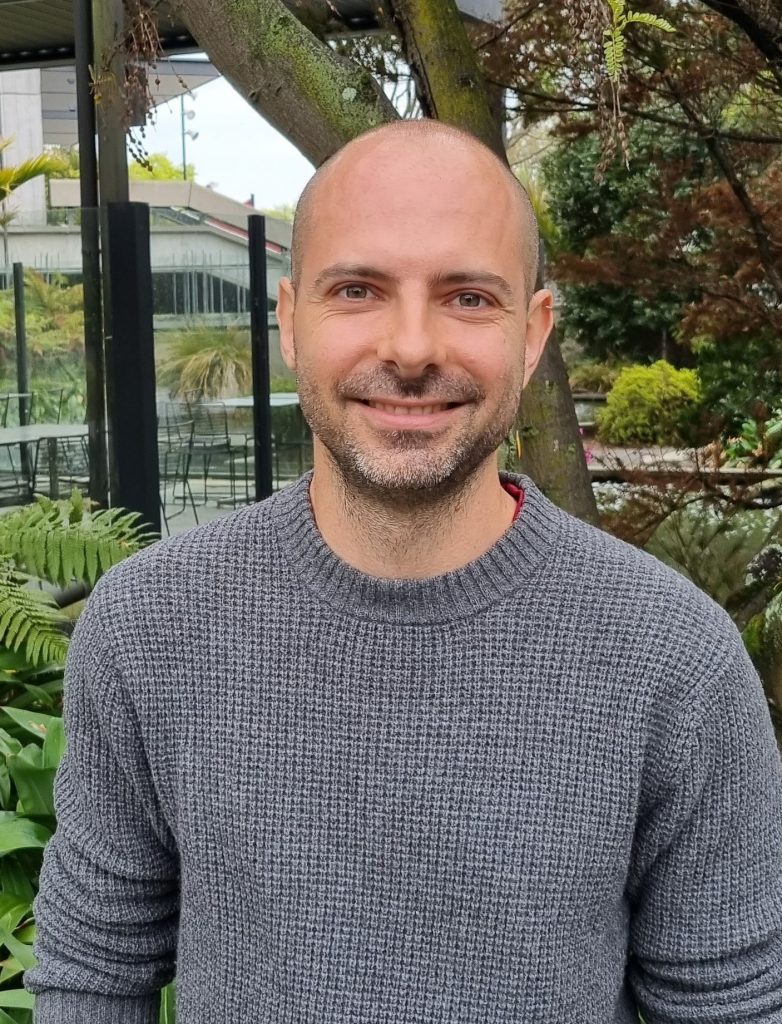The science of cascades: understanding impact propagation to enhance conservation efforts
How do disturbances in our ecosystems spread and cascade across landscapes? David Garcia-Callejas is an ecologist working at the University of Canterbury with our Crazy & Ambitious Think Tank – and puzzles like this are his speciality.
“Imagine an ecological community,” begins ecologist David Garcia-Callejas, explaining the concept of impact propagation. “Imagine a collection of different plant and animal species in a certain spatial context, perhaps a forest or grassland community.
“When there is a disturbance, or perturbation, to a certain tree species (for example, a disease like myrtle rust) this will directly affect the trees, but there are also effects that propagate – or spread – to other species that rely on the tree for shelter or sustenance. Due to these interactions, the perturbation will propagate across space to other species. What we are studying are the general rules for this propagation of effects across the space, both in that same ecological community, and across habitats to adjacent ecological communities.”

There’s a lot to consider when wrapping your brain around impact propagation, with every species in an ecosystem, as well as every potential perturbation, having seemingly innumerable potential interactions.
The complexity of these interactions are both fascinating and mind-bending to consider – but understanding them can help mitigate biosecurity threats. A handy example of impact propagation is the well-known case of wolf reintroduction to Yellowstone National Park, which resulted in “spill-over” or “cascade” effects, including the population recovery of beavers, of aspen and other vegetation.
Top predators are well studied in this field, but David wants to go further – in terms of the spatial dimension of this effect, as well as the number of species involved. “We don’t want to limit ourselves to two or three species,” he says. “We want to consider the whole complexity of ecological communities.”
Identifying species that are habitat generalists is especially important in understanding how impacts can propagate across space, connecting different communities. For example, a grassland could act as a barrier between two forest communities, but a habitat generalist moving between all three communities can convey impacts between the two forests – perhaps by the dispersal of seeds from healthy trees, or less fortunately, aiding the spread of harmful pathogens, like the spores of myrtle rust.
“We are interested in the scale of the whole New Zealand territory to see to what extent effects in certain habitats propagate to other habitat types.”
“What we try to answer is whether there are general rules for this propagation of effects across the space, in the same and across different habitats,” says David. “This has implications in the design of conservation areas.”
David’s research integrates insights from network theory and the spatial distribution of ecological interactions to understand the spatial scales of disturbances – like myrtle rust – in ecosystems.
If the ecological effects arising from the perturbation of one species go beyond the immediate ecosystem, this can mean that the community would need targeted conservation across a much broader area than what we might first expect.
“We are trying to gather this data on plants and birds for the whole territory of New Zealand in order to test this on a large spatial scale,” says David.
“The type of data we’re using includes positive effects. We are using data on bird seed-dispersers. Certain species of bird will disperse the seeds of certain plants to other territories and this will often result in a cascade of positive effects for the ecosystem.”
To address their scientific questions, David and his team need to integrate data from different sources, primarily from plant and bird observations from numerous different groups.
Hailing from Spain, David has been impressed by the data collection infrastructure in Aotearoa. “Our work is made possible through studies carried out by different [local organisations and researchers] who have relentlessly collected smaller data, which has then been organised by overarching organisations,” he says. “Without this infrastructure, we wouldn’t be able to ask the type of questions that we are asking.
“For researchers like me who work with integrated data from different sources, it is easy and efficient to work with organisations that do the job of collecting and compiling different datasets,” says David. “We’ve had to communicate with the National Vegetation Survey, and also with the Department of Conservation. They have taken care of the process of contacting the individual owners of their specific datasets that we are using, and arranging with them the conditions of use. I could not be happier.”
Impact propagation can be seen in other types of complex, interacting systems, like traffic jams in road networks, harmful ideas on social media platforms, and Covid-19 spreading through networks of human contacts.
David gives an example of the important role social connections and peer approval can play in farming communities, where conservation initiatives that are seen as beneficial can spread via word-of-mouth, and then cascade into adjacent ecological communities.
“We are for now developing the methodological framework and the theory to address these kinds of questions in an ecological context. But of course, once we have the tools for analysing this type of problems, our method can be generalised to other types of systems, including connections between ecological and social systems. That’s something we are definitely going to explore further along the way.”
“The challenge will be to understand the connections between different systems: the type of data we need, and how can we link social/cultural relationships to ecological properties and concepts – and then actually have a meaningful framework that includes both ecology and social and cultural relationships.”
David’s work is part of the BioHeritage Crazy & Ambitious Think Tank – a Pou (supporting architecture) that aims to stimulate new ideas, approaches or syntheses that are needed to improve our biological heritage over the long-term.
Kerry Donovan Brown
November 2022